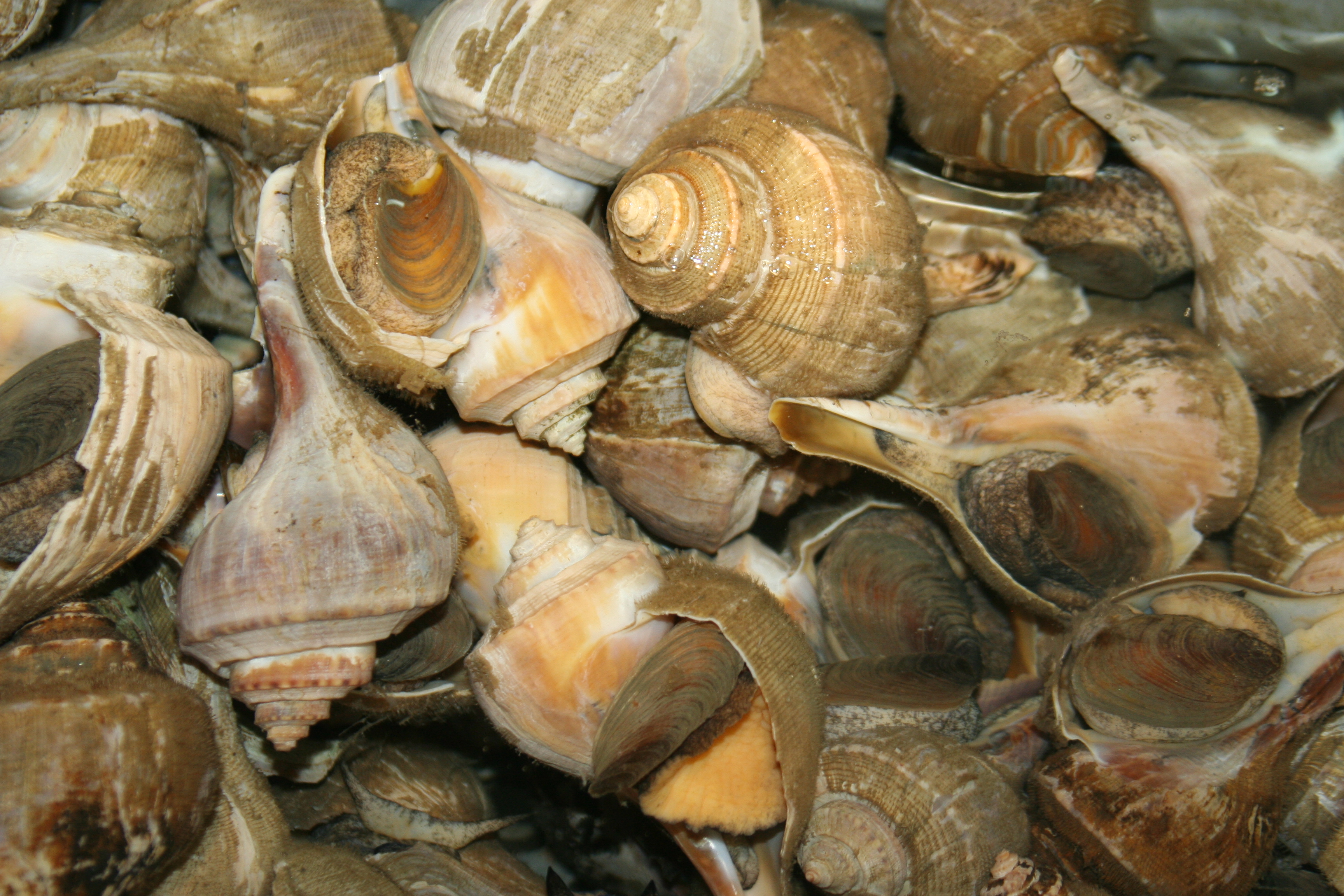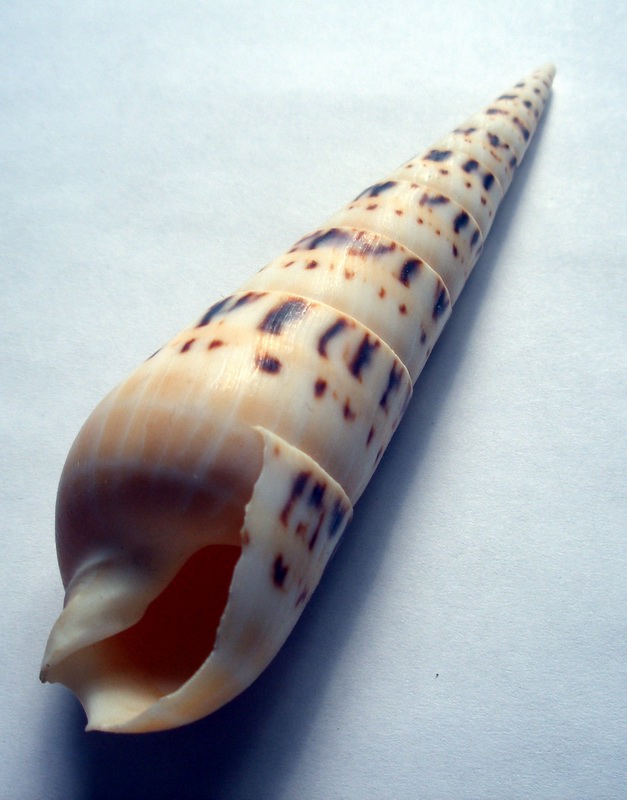|
Stromboid Notch
The stromboid notch is an anatomical feature which is found in the gastropod shell, shell of one Taxonomy (biology), taxonomic family of medium-sized to large sea snails, the conches. Marine (ocean), Marine gastropods in the family Strombidae have a notch in the edge of the shell aperture (mollusc), aperture not far from the siphonal canal. This indentation is called the stromboid notch. Its function is to enable the animal to extend one of its two stalked eyes out through the notch when the animal is active.Kenneth R. Wye, ''The Encyclopedia of Shells,'' London, 2004, p. 70. See also * ''Strombus'' * siphonal notch * siphonal canal References Gastropod anatomy Mollusc shells {{gastropod-stub ... [...More Info...] [...Related Items...] OR: [Wikipedia] [Google] [Baidu] |
Gastropod Shell
The gastropod shell is part of the body of many gastropods, including snails, a kind of mollusc. The shell is an exoskeleton, which protects from predators, mechanical damage, and dehydration, but also serves for muscle attachment and calcium storage. Some gastropods appear shell-less (slugs) but may have a remnant within the mantle, or in some cases the shell is reduced such that the body cannot be retracted within it (semi-slug). Some snails also possess an operculum that seals the opening of the shell, known as the Aperture (mollusc), aperture, which provides further protection. The study of mollusc shells is known as conchology. The biological study of gastropods, and other molluscs in general, is malacology. Shell morphology terms vary by species group. Shell layers The gastropod shell has three major layers secreted by the Mantle (mollusc), mantle. The calcareous central layer, ostracum, is typically made of calcium carbonate (CaCO3) precipitated into an organic matrix ... [...More Info...] [...Related Items...] OR: [Wikipedia] [Google] [Baidu] |
Taxonomy (biology)
In biology, taxonomy () is the science, scientific study of naming, defining (Circumscription (taxonomy), circumscribing) and classifying groups of biological organisms based on shared characteristics. Organisms are grouped into taxon, taxa (singular: taxon), and these groups are given a taxonomic rank; groups of a given rank can be aggregated to form a more inclusive group of higher rank, thus creating a taxonomic hierarchy. The principal ranks in modern use are domain (biology), domain, kingdom (biology), kingdom, phylum (''division'' is sometimes used in botany in place of ''phylum''), class (biology), class, order (biology), order, family (biology), family, genus, and species. The Swedish botanist Carl Linnaeus is regarded as the founder of the current system of taxonomy, having developed a ranked system known as Linnaean taxonomy for categorizing organisms. With advances in the theory, data and analytical technology of biological systematics, the Linnaean system has transfo ... [...More Info...] [...Related Items...] OR: [Wikipedia] [Google] [Baidu] |
Conch
Conch ( , , ) is a common name of a number of different medium-to-large-sized sea snails. Conch shells typically have a high Spire (mollusc), spire and a noticeable siphonal canal (in other words, the shell comes to a noticeable point on both ends). Conchs that are sometimes referred to as "true conchs" are Marine (ocean), marine gastropods in the family (biology), family Strombidae, specifically in the genus ''Strombus'' and other closely related genera. For example, ''Aliger gigas'', the queen conch, is a true conch. True conchs are identified by their long spire. Many other species are also often called "conch", but are not at all closely related to the family Strombidae, including ''Melongena'' species (family Melongenidae) and the horse conch ''Triplofusus papillosus'' (family Fasciolariidae). Species commonly referred to as conches also include the sacred chank or ''shankha'' shell (''Turbinella pyrum'') and other ''Turbinella'' species in the family Turbinellidae. The ... [...More Info...] [...Related Items...] OR: [Wikipedia] [Google] [Baidu] |
Marine (ocean)
The ocean is the body of salt water that covers approximately 70.8% of Earth. The ocean is conventionally divided into large bodies of water, which are also referred to as ''oceans'' (the Pacific, Atlantic, Indian, Antarctic/Southern, and Arctic Ocean),"Ocean." ''Merriam-Webster.com Dictionary'', Merriam-Webster, https://www.merriam-webster.com/dictionary/ocean . Accessed March 14, 2021. and are themselves mostly divided into seas, gulfs and subsequent bodies of water. The ocean contains 97% of [...More Info...] [...Related Items...] OR: [Wikipedia] [Google] [Baidu] |
Gastropod
Gastropods (), commonly known as slugs and snails, belong to a large Taxonomy (biology), taxonomic class of invertebrates within the phylum Mollusca called Gastropoda (). This class comprises snails and slugs from saltwater, freshwater, and from the land. There are many thousands of species of sea snails and sea slug, slugs, as well as freshwater snails, freshwater limpets, land snails and slugs. The class Gastropoda is a diverse and highly successful class of mollusks within the phylum Mollusca. It contains a vast total of named species, second only to the insects in overall number. The fossil history of this class goes back to the Furongian, Late Cambrian. , 721 family (taxonomy), families of gastropods are known, of which 245 are extinct and appear only in the fossil record, while 476 are currently neontology, extant living fossil, with or without a fossil record. Gastropoda (previously known as univalves and sometimes spelled "Gasteropoda") are a major part of the phylum Mo ... [...More Info...] [...Related Items...] OR: [Wikipedia] [Google] [Baidu] |
Strombidae
Strombidae, common name, commonly known as the true conchs, is a Taxonomy (biology), taxonomic family (biology), family of medium-sized to very large sea snails in the superfamily (zoology), superfamily Stromboidea, and the Epifamily Neostromboidae. The term true conchs, being a common name, does not have an exact meaning. It may generally refer to any of the Strombidae but sometimes is used more specifically to include only ''Strombus'' and ''Lambis''.Goodenough, W. H. & Sugita, H. (1980).Trukese-English dictionary. Philadelphia: American Philosophical Society. p. 235] The family currently includes 31 Extant taxon, extant, and 10 extinct genera. Distribution Strombid gastropods live mainly in tropical and subtropical waters. These animals are widespread in the Indo-West Pacific, where most species and genera occur. Nearly 40 of the living species that used to belong to the genus ''Strombus'' can be found in the Indo-Pacific region.Abbott, R.T. (1960). "The genus ''Strombus'' ... [...More Info...] [...Related Items...] OR: [Wikipedia] [Google] [Baidu] |
Aperture (mollusc)
The aperture is an opening in certain kinds of mollusc shells: it is the main opening of the shell, where the head-foot part of the body of the animal emerges for locomotion, feeding, etc. The term ''aperture'' is used for the main opening in gastropod shells, scaphopod shells, and also for ''Nautilus'' and ammonite shells. The word is not used to describe bivalve shells, where a natural opening between the two shell valves in the closed position is usually called a ''gape (bivalve), gape''. Scaphopod shells are tubular, and thus they have two openings: a main anterior aperture and a smaller posterior aperture. As well as the aperture, some gastropod shells have additional openings in their shells for respiration; this is the case in some Fissurellidae (keyhole limpets) where the central smaller opening at the apex (mollusc), apex of the shell is called an orifice, and in the Haliotidae (abalone) where the row of respiratory openings in the shell are also called orifices. In ... [...More Info...] [...Related Items...] OR: [Wikipedia] [Google] [Baidu] |
Siphonal Canal
The siphonal canal is an anatomical feature of the shells of certain groups of sea snails within the clade Neogastropoda. Some sea marine gastropods have a soft tubular anterior extension of the mantle called a siphon through which water is drawn into the mantle cavity and over the gill and which serves as a chemoreceptor to locate food. Siphonal canals allow for active transport of water to sensory organs inside the shell. Organisms without siphonal canals in their shells rely on passive or diffuse transport or water into their shell. Those with siphonal canals have a direct inhalant stream of water that interacts with sensory organs to detect concentration and direction of a stimulus, such as food or mates. In certain groups of carnivorous snails, where the siphon is particularly long, the structure of the shell has been modified in order to house and protect the soft structure of the siphon. Thus the siphonal canal is a semi-tubular extension of the aperture of the shell ... [...More Info...] [...Related Items...] OR: [Wikipedia] [Google] [Baidu] |
Strombus Alatus
''Strombus alatus'', the Florida fighting conch, is a species of medium-sized, warm-water sea snail, a marine gastropod mollusk in the family Strombidae, the true conchs. Its name derives two Latin words. Strombus means, in Latin, a snail with spiral shell, which derives from the Greek στρόμβος, meaning anything turned or spun around, like a top or, as in Aristotle's Historia Animalium, a sea snail. Alatus means, in Latin, "winged". Distribution This conch occurs in the Western Atlantic Ocean from North Carolina to Florida and the Gulf of Mexico, Louisiana, Texas, and the east coast of Mexico. Description The shell can be as large as .Welch J. J. (2010). "The "Island Rule" and Deep-Sea Gastropods: Re-Examining the Evidence". '' PLoS ONE'' 5(1): e8776. . This species is closely similar to ''Strombus pugilis'', the West Indian fighting conch, which has a more southerly range. ''S. alatus'' shells have less prominent subsutural spines and slightly more projected outer l ... [...More Info...] [...Related Items...] OR: [Wikipedia] [Google] [Baidu] |
Strombus
''Strombus'' is a genus of medium to large sea snails, marine (ocean), marine gastropod molluscs in the family (biology), family Strombidae, which comprises the true conchs and their immediate relatives. The genus ''Strombus'' was named by Swedish Naturalist Carl Linnaeus in 1758. Around 50 living species were recognized, which vary in size from fairly small to very large. Six species live in the greater Caribbean region, including the queen conch, ''Strombus gigas'' (now usually known as ''Eustrombus gigas'' or ''Lobatus gigas'' or Aliger gigas, Aliger gigas), and the West Indian fighting conch, ''Strombus pugilis''. However, since 2006, many species have been assigned to discrete genera. These new genera are, however, not yet found in most textbooks and collector's guides. Worldwide, several of the larger species are economically important as food sources; these include the endangered queen conch, which very rarely also produces a pink, gem-quality pearl. In the geological pas ... [...More Info...] [...Related Items...] OR: [Wikipedia] [Google] [Baidu] |
Siphonal Notch
A siphonal notch is a feature of the gastropod shell, shell anatomy in some sea snails, Marine (ocean), marine gastropod mollusc, mollusks. In these particular groups of sea snails the animal has a soft tubular anterior extension of the mantle (mollusc), mantle called a siphon (mollusc), siphon through which water is drawn into the mantle cavity and over the gill and which serves as a chemoreceptor to locate food. This siphonal opening also serves for the exit of the water that has entered by the branchial opening. The siphonal notch is a noticeable notch situated at the most posterior part of the aperture (mollusc), aperture of the shell, through which the siphon is extended when the animal is active. The notch at the posterior end of the aperture is also called the anal notch, anal sinus, anal canal or posterior canal. Instead of a simple siphonal notch, some gastropods have an elongated siphonal canal, a hard shell tube which extends out from the anterior edge of the aperture ... [...More Info...] [...Related Items...] OR: [Wikipedia] [Google] [Baidu] |







